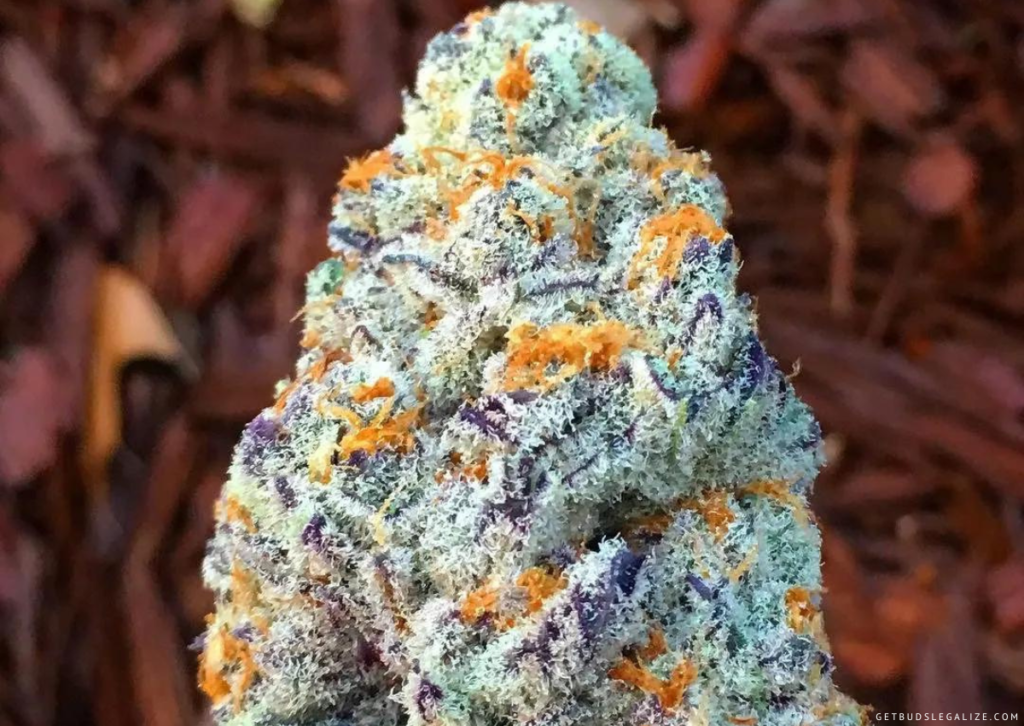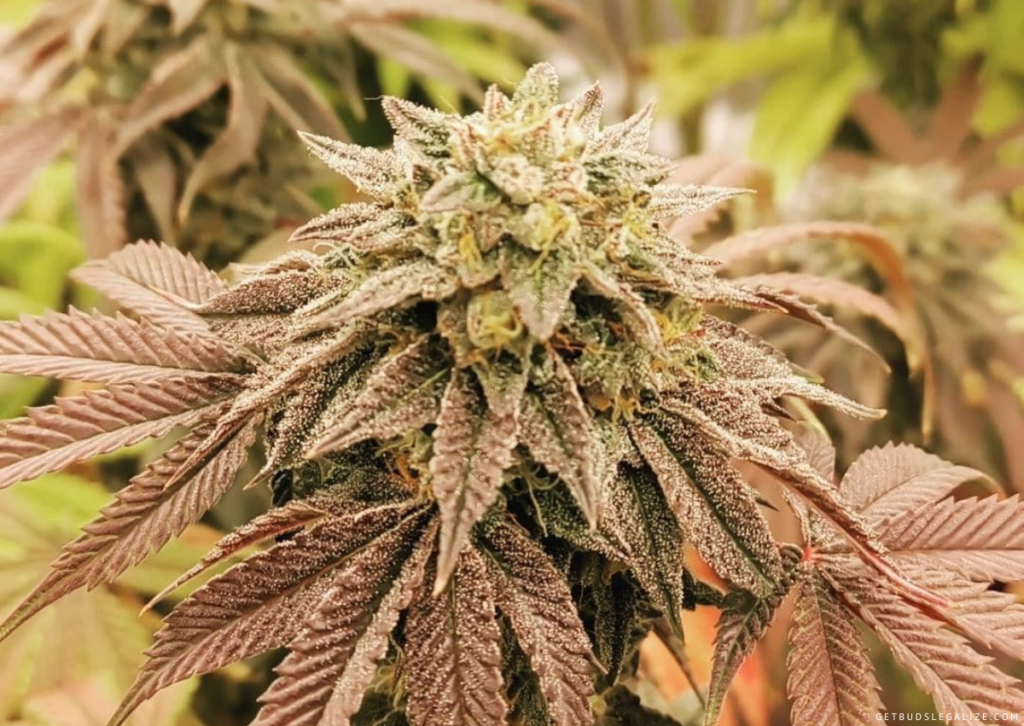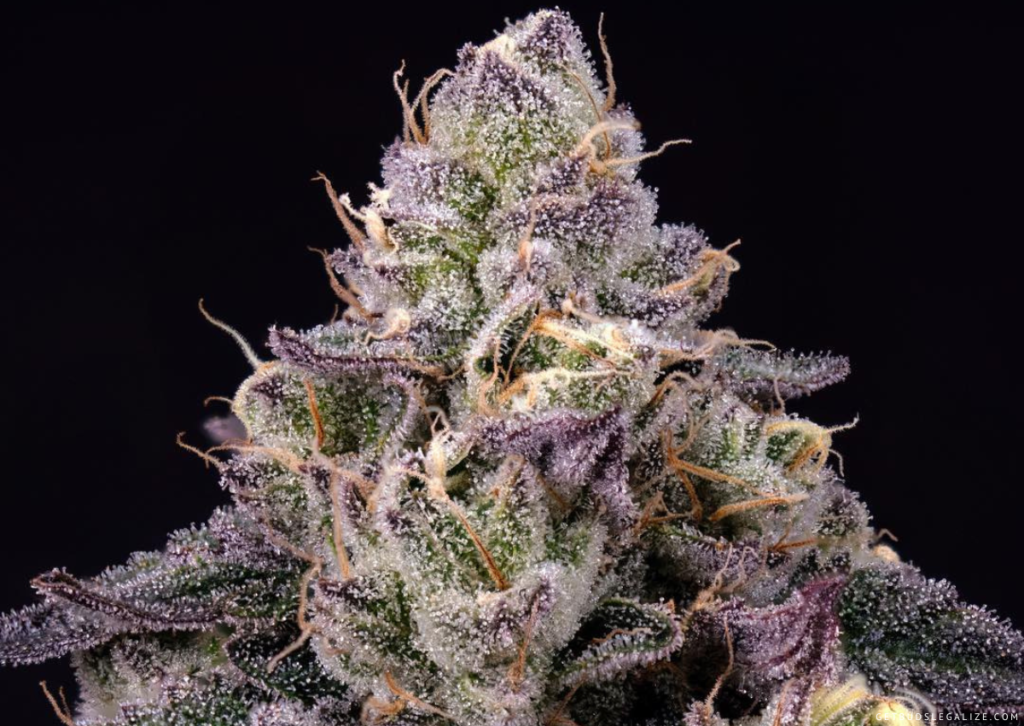Discover How To Effectively Use Cannabis For Pain Management: Learn About How It Works!
Humans have been using cannabis as a pain reliever for at least 5,000 years. Ancient Chinese and Indian societies commonly used cannabis for pain relief, and it was even sold in American pharmacies until the early 1900s. However, the composition of modern cannabis is very different from that of its ancient counterpart, and we now have a There is extensive scientific research that helps us understand its effects on chronic pain.
Cannabis differs from most other medications because no fixed dosage works for everyone and it is not legal in every state in the United States. Additionally, because it is not an FDA-approved treatment, it can be difficult to determine where to start if you are considering cannabis to relieve chronic pain symptoms.
To address these issues, we’ve created a guide that will help you understand the mechanism of cannabis in treating chronic pain and provide you with the best steps to take if you decide to try it for your symptoms.
How Does Cannabis Help Treat Chronic Pain?
The cannabis plant is known to contain active compounds called cannabinoids that interact with the endocannabinoid system and other binding sites in the body. These cannabinoids help turn nerve signals on or off, thus regulating various bodily functions. Among the numerous cannabinoids, the two best known are tetrahydrocannabinol (THC) and cannabidiol (CBD).
THC and CBD activate receptors in the brain and nerves, which play a crucial role in controlling chronic pain. They also activate receptors on immune cells, which help regulate inflammation and the immune response. This suggests that cannabis could be an effective treatment option for various types of chronic pain, including neuropathy, fibromyalgia, and arthritis. It is also being studied as a potential remedy for pain and swelling associated with autoimmune diseases.
However, it is important to note that while some states have legalized cannabis for medical purposes, it is not an FDA-approved drug and is still considered illegal under federal law. One of the main challenges associated with the use of cannabis is the lack of consistent regulations to ensure its safe production.
Therefore, it is crucial to consult your doctor before using cannabis, learn about the options available in your state, and evaluate the risks and benefits associated with its use. This will help safeguard your health and well-being and ensure you make an informed decision.
It is also important to keep in mind that the effects of cannabis can vary from person to person and that its long-term effects are not yet fully understood.

What Does The Research Say About Using Cannabis For Pain?
Chronic pain is a common reason why people use medical cannabis, but there is conflicting research on its effectiveness. Numerous scientific studies, including randomized controlled trials, have shown that cannabis is a successful pain reliever for adults with various types of chronic pain.
In a survey of over 900 people suffering from chronic pain, 75% reported pain relief as the primary benefit of their cannabis use. Another study revealed that opioid use for pain decreased by more than 60% in those using cannabis for chronic pain.
These studies indicate that cannabis has the potential to improve the quality of life and daily functioning of people suffering from chronic pain. This implies that cannabis can serve as a valuable tool for managing pain instead of eradicating it.
This phenomenon is referred to as the “Restored Self” by some researchers, which suggests that cannabis use can help people regain their sense of self and control over their lives, which chronic pain can often take away.
What Is The Recommended Dose Of Cannabis For Pain Relief?
It is important to note that there is no one-size-fits-all cannabis dosage for chronic pain. This is due to several reasons.
- First, cannabis is not an FDA-approved drug, meaning there is no standard dosing guideline that has been proven safe and effective.
- Secondly, cannabis is a plant that comes in many different strains, making it difficult to replicate the same dosage from batch to batch.
- Additionally, the different amounts of cannabinoids in each strain will provide different effects.
- Finally, everyone’s endocannabinoid system is different, meaning your body chemistry may not react to a dose of cannabis the same way as someone else’s.
Clinical studies often use different doses or formulations of cannabis than those available in dispensaries or do not include detailed dosing information at all, meaning their results may not apply to real-world situations.
In 2021, a group of twenty experts from different countries came together to develop a guideline for dosing cannabis in the treatment of chronic pain. According to these guidelines, healthcare providers should begin by administering 5 mg of a high-CBD formulation (with a THC/CBD ratio no greater than 1:10) orally twice daily. If necessary, the provider can increase the dose by 10 mg of CBD per day every 2 to 3 days.
Once the dose reaches 40 mg of CBD per day and symptoms do not improve, the provider can begin to slowly add THC, starting with 2.5 mg. It is not recommended to exceed 40 mg of THC per day.
This guideline suggests starting with a high-CBD cannabis formulation due to its non-intoxicating nature and fewer side effects compared to THC. Furthermore, it is recommended to take the drug orally as it has longer-lasting effects, more predictable results, and carries a lower risk of lung damage than inhaling cannabis.
However, inhaled cannabis has a faster onset of action and can provide relief from severe pain symptoms. Therefore, experts suggest using vaporized dried flowers with a balanced amount of CBD and THC or a high THC formulation as required for severe pain in combination with the above oral dosing schedule.
It’s important to keep in mind that cannabis may not be the right treatment option for everyone. Additionally, the following protocol is only a general guideline and is not an FDA-approved dosing recommendation.
Therefore, it is highly recommended that you speak with your doctor before attempting this protocol. Based on your medical history, your provider can determine whether it is safe for you to proceed.

What Are The Potential Risks And Side Effects Of Using Cannabis To Manage Pain?
It is important to keep in mind that using cannabis carries risks, side effects, and potential drug interactions, similar to any other substance. Most related side effects are related to THC and may include increased appetite, red eyes, dizziness, drowsiness, a slowed sense of time, rapid heartbeat, and diarrhea.
However, these side effects can often be avoided by gradually increasing the dose over time and following a dosing schedule. If these effects occur, they are usually easy to manage on their own and will fade as the dose of cannabis wears off.
It is worth noting that there are also more significant risks of cannabis use that should be taken into consideration. Symptoms related to THC’s effect on the mental health can be quite significant, particularly with higher doses.
These symptoms may include feelings of fear or anxiety, vomiting that does not stop (known as cannabis hyperemesis syndrome), impaired thinking and coordination, memory problems, as well as seeing, or hearing things that are not real, and irrational thoughts or feelings that you are not yourself.
Additionally, cannabis with high levels of THC can be habit-forming and may not be suitable for people with a history of substance abuse or addiction.
For effective pain management with cannabis, it is important to use it responsibly and at the lowest effective dose for your symptoms. Products high in CBD or balanced CBD to THC are preferred for pain management to reduce risks.
Does Cannabis Interact With Other Pain Medications?
It’s possible that taking cannabis with certain pain medications could increase your risk of experiencing side effects, such as dizziness and drowsiness.
However, in some cases, cannabis can help other pain medications work better or allow you to take less of them, particularly when it comes to opioid pain medications.
It is important to note that combining pain medications should not be attempted without seeking professional help. Your doctor can help you find the most effective treatment options for your pain and can make any necessary changes to your treatment plan safely.
What Are The Best Medical Cannabis Strains For Treating Pain?
Let’s take a look at some of the most popular and effective strains on the market.
1. OG Kush:

OG Kush is a well-known hybrid strain that offers a combination of a high THC content, which can range from 19% to 26%, and a moderate CBD content of approximately 0.30%.
This strain boasts a strong pungent aroma that is earthy and piney, with subtle hints of lemon and spicy undertones. Its potent effects produce a euphoric and relaxing high, which can be particularly beneficial for individuals looking to alleviate stress, anxiety, depression, and pain.
OG Kush is especially effective in treating neuropathic pain, migraines, arthritis, and muscle spasms, making it a popular choice among medicinal cannabis users.
2. Blue Dream:

Blue Dream is a popular hybrid cannabis strain that is known for its sativa-dominant properties. With a THC content of around 17-24%, it is a potent strain that offers a balanced cerebral and physical effect.
This strain has a sweet aroma of berries and citrus with underlying notes of herbal and floral scents. The uplifting and creative effects of Blue Dream make it a perfect choice for those looking to enhance their mood and productivity, while also easing their pain.
It is particularly effective in treating inflammatory pain, chronic pain, fibromyalgia, and neuropathy. Overall, Blue Dream is a versatile and effective strain that offers a range of therapeutic benefits.
3. Bubba Kush:

Bubba Kush is a highly potent strain that is known for its Indica-dominant genetics. With a THC content of around 18% and a low CBD content of approximately 0.1%, this strain is renowned for its powerful sedative and relaxing effects.
When you take a whiff of Bubba Kush, you’ll notice a delightful sweet and earthy aroma, with subtle notes of chocolate and coffee. These earthy undertones make it a popular choice among cannabis enthusiasts who enjoy a more complex and nuanced flavor profile.
The relaxing effects of Bubba Kush are particularly effective at reducing chronic pain, cancer pain, sclerosis, and spinal cord injury. It can also be helpful for those suffering from stress, insomnia, and appetite loss. So, if you’re looking for a strain that will help you unwind after a long day, Bubba Kush is an excellent choice.
4. Granddaddy Purple:

Granddaddy Purple is a popular strain that is known for its relaxing and calming effects. It is an Indica-dominant hybrid that contains a high THC content of around 23%, and a low CBD content of approximately 0.1%. The strain has a distinctive aroma of fruity grape with hints of lavender and pine, making it a treat for the senses.
The soothing effects of Granddaddy Purple make it an excellent choice for those looking to relieve pain, anxiety, depression, and insomnia. The strain is particularly beneficial for people dealing with muscle pain, nerve pain, arthritis, and menstrual cramps. The strain’s therapeutic qualities can help to alleviate pain and discomfort, promoting a sense of calm and relaxation that can help you get a good night’s sleep.
Overall, Granddaddy Purple is a potent and effective strain that is perfect for anyone looking for a natural way to ease pain and discomfort. Its unique blend of fruity and floral aromas, along with its calming effects, make it a popular choice among cannabis enthusiasts looking to unwind and relax.
Correlated Article:
FAQs about Godfather OG Marijuana Strain
Pain is an unpleasant sensation that signals potential or actual damage to the body. It can be acute or chronic, depending on its duration and cause. Acute pain is usually short-lived and resolves when the injury heals. Chronic pain is persistent and lasts for more than three months, often without a clear cause.
Cannabis can help with pain by interacting with the endocannabinoid system (ECS), a network of receptors and molecules that regulate various physiological processes, including pain perception, inflammation, mood, and memory. The ECS produces its cannabinoids, called endocannabinoids, that bind to cannabinoid receptors (CB1 and CB2) and modulate the activity of neurons and immune cells. Cannabis contains phytocannabinoids, such as tetrahydrocannabinol (THC) and cannabidiol (CBD), that can also bind to these receptors and mimic or enhance the effects of endocannabinoids.
THC is the main psychoactive component of cannabis, responsible for the euphoric and relaxing effects. It can also reduce pain by activating CB1 receptors in the brain and spinal cord, which inhibit the transmission of pain signals. CBD is a non-psychoactive component of cannabis, with anti-inflammatory, antioxidant, and neuroprotective properties. It can also reduce pain by activating CB2 receptors in the peripheral tissues, which modulate the inflammatory response and reduce the sensitivity of nerve endings.
Cannabis can offer several benefits for people who suffer from chronic pain, such as:
- Reducing the intensity and frequency of pain
- Improving the quality of life and well-being
- Enhancing the mood and reducing stress
- Improving sleep quality and duration
- Reducing the use of opioids and other painkillers
- Providing a natural alternative to conventional treatments
Cannabis is generally well-tolerated and safe when used under medical supervision and in moderate doses. However, some people may experience some side effects, such as:
- Impairment of cognition, memory, attention, and coordination
- Dry mouth, red eyes, increased appetite, and drowsiness
- Anxiety, paranoia, psychosis, and hallucinations (especially with high doses of THC)
- Tolerance, dependence, and withdrawal symptoms (especially with chronic use)
- Drug interactions with other medications (such as anticoagulants, antidepressants, anticonvulsants, etc.)
- Respiratory problems (if smoked)
There are different ways to consume cannabis for pain management, such as:
- Vaping or smoking weed flowers or concentrates
- Eating or drinking edibles or beverages infused with cannabis
- Applying topical creams or oils on the skin
- Taking capsules or tinctures under the tongue
The method of consumption affects the onset, duration, and intensity of the effects. Smoking or vaping produces rapid and potent effects that last for 1-3 hours. Edibles produce delayed and prolonged effects that last for 4-8 hours. Topicals produce localized and mild effects that last for 2-4 hours. Capsules or tinctures produce moderate and steady effects that last for 3-6 hours.
When selecting a medical marijuana strain to treat pain, it is important to consider the following factors:
1. THC and CBD Ratio: In general, strains with higher levels of THC (tetrahydrocannabinol) are more effective in treating neuropathic pain caused by nerve damage or dysfunction, while strains with higher levels of CBD (cannabidiol) are more effective in treating inflammatory pain caused by tissue damage or infection. However, some people may prefer a balanced ratio of THC to CBD to experience the benefits of both without feeling too much psychoactivity or sedation.
2. The Terpene Profile: It is worth noting that various terpenes show different effects on pain. Take myrcene for example, which has been shown to have analgesic, anti-inflammatory, and sedative effects. This terpene is found in many Indica strains, widely known for its calming and relaxing properties. On the other hand, limonene, another terpene, has been shown to have energizing, anti-inflammatory, and antidepressant effects. It is found in many sativa strains, known for its uplifting and stimulating properties.
3. Personal Preference: it’s important to keep in mind that what works for one person may not work for another. This is because each person has a unique body chemistry, tolerance level, and preference when it comes to cannabis. Some individuals may find that strains that promote relaxation and better sleep at night are more effective at relieving pain, while others may prefer strains that help them stay focused and productive during the day. Therefore, it is crucial to experiment with different strains and dosages until you find the right one that works for you. This way, you can discover your sweet spot and get optimal pain relief.




















